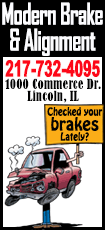|
 Aerobic fitness has already been linked to better thinking abilities
in pre-teen children, but the current study found an independent
link between muscle fitness and kids’ performance on memory tests as
well as their math and reading skills. Aerobic fitness has already been linked to better thinking abilities
in pre-teen children, but the current study found an independent
link between muscle fitness and kids’ performance on memory tests as
well as their math and reading skills.
“We've seen this relationship for cardiorespiratory fitness many
times before,” said senior author Charles H. Hillman of Northeastern
University in Boston. “The relationship with strength is novel in
children, but based on work with older adults, it was expected.”
For the study, which was funded by Nike, 75 kids aged 9 to 11 years
completed an aerobic exercise test at steady speed on a treadmill
with gradually increasing incline until they were too out of breath
to continue. They completed a similar test of muscular fitness with
a battery of upper body, lower body and core exercises using body
weight or a medicine ball, including lunges, push-ups and shoulder
presses.
The kids did as many repetitions of each exercise as possible within
30 seconds while maintaining proper form.

They also completed computerized tests of working memory, algebra,
geometry, reading and writing.
“Aerobic fitness describes the capacity of the lungs to take in and
deliver oxygen as well as the heart to effectively distribute oxygen
to the body,” Hillman told Reuters Health by email. “Musculoskeletal
fitness relates to muscle strength, power and endurance to enable
performance in the face of resistance.”
The two go hand in hand, but training one system does not guarantee
adaptation to the other system, he said.
After accounting for age, sex, grade, IQ and family education
levels, researchers found that kids with better aerobic fitness on
the treadmill test also had more accurate responses in the memory
test and better performance at algebraic functions.
Kids with more muscular fitness on the body weight and medicine ball
tests also did better than others on memory and academic tests,
according to the report in Medicine and Science in Sports and
Exercise.
“This study shows that during instances that require greater working
memory demand, higher fit children (regardless of whether we
assessed muscular or aerobic fitness) performed better (i.e., were
more accurate in their responses),” Hillman said.
[to top of second column] |

“Working memory refers to the ability to hold and manipulate
information for a short period of time to guide cognition or
behavior,” he said.
Aerobic fitness also related to mathematics achievement, so there
may be an additional benefit of being aerobically fit, he said.
“In this study, we did not measure brain structure or function, so
while we can guess, we cannot make statements about the brain,” he
said.
Many, if not most, benefits of fitness on thinking and memory are
similar in adults, he said.
For now, children should get more than 60 minutes a day of moderate
to vigorous physical activity and regular weight bearing exercise,
according to current guidelines, he said.
“If it proves possible to enhance children’s memory and academic
performance through fitness training, it would provide an attractive
alternative to our current intervention strategies for helping
struggling students,” said Daniel Belsky, assistant professor of
medicine at Duke University School of Medicine in Durham, North
Carolina, who was not part of the new study.
“To me, the implication is pretty clear,” Belsky told Reuters Health
by email. “We should think about getting kids exercise during the
school day as one of the tools we have to enhance their learning.”
SOURCE: http://bit.ly/2eiQsv2 Medicine and Science in Sports and
Exercise, online October 21, 2016.
[© 2016 Thomson Reuters. All rights
reserved.] Copyright 2016 Reuters. All rights reserved. This material may not be published,
broadcast, rewritten or redistributed.
 |